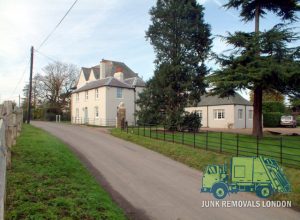The London borough of Bromley occupies a territory of 59 square miles. As a result, it is the biggest of all other boroughs of the UK capital. Bromley is inhabited by nearly 300,000 people and it is situated 9 miles from Charing Cross. Although it is one of London’s outer boroughs, it borders with four other boroughs to its north alone – Southwark, Lewisham, Greenwich and Bexley. Also, the area is home to one of the most expensive property markets in London – Bickley BR3. However, these are facts that anyone can easily read in almost every guidebook about Bromley or the English capital. But many of the most interesting things about this borough either remain generally unknown or can be learnt only after spending a few years living in the area.
The Kent vs. London question
 Today, Bromley is sitting comfortably in Greater London. But until 1963, the area was actually located in the county of Kent. Even though it has been more than 50 years since it was added to the city’s territory, a great part of the borough’s elderly population likes to say that they are still living in Kent and not in the capital of the United Kingdom. The postcodes of the different districts in Bromley can also trick you into believing that you are located somewhere outside of London. The Bromley postcode area includes a number of districts in the north-western part of Kent. Moreover, areas like Aperfield TN16 and Cudham TN14 have a Tonbridge postcode which is mainly used in southern Kent. So, although officially Bromley is part of London, many of its districts have postcodes used by towns and villages in England’s south-eastern county.
Today, Bromley is sitting comfortably in Greater London. But until 1963, the area was actually located in the county of Kent. Even though it has been more than 50 years since it was added to the city’s territory, a great part of the borough’s elderly population likes to say that they are still living in Kent and not in the capital of the United Kingdom. The postcodes of the different districts in Bromley can also trick you into believing that you are located somewhere outside of London. The Bromley postcode area includes a number of districts in the north-western part of Kent. Moreover, areas like Aperfield TN16 and Cudham TN14 have a Tonbridge postcode which is mainly used in southern Kent. So, although officially Bromley is part of London, many of its districts have postcodes used by towns and villages in England’s south-eastern county.
A rural, yet modern place
Start exploring Bromley from the north and you might think that it is a well-urbanised part of London. Districts like Beckenham BR3, SE20 and Orpington BR5, BR6 are a good example of that. Beckenham has an impressive range of restaurants and pubs on its territory, while Orpington will keep you entertained with its countless leisure centres and facilities. Even though Bromley’s northern districts differ from London’s central areas, they do have the dynamic and energetic atmosphere that is typical of any city or big town.
The more you travel to the south, however, the more rural the borough becomes. That is especially the case with the districts which are situated closest to Kent. Among them is Downe BR6 – a London village which is barely three miles away from the urbanised Orpington. Almost nothing about Downe shows that it is indeed part of one of the largest and most densely populated metropolitan areas in Europe. For most of the 20th century, farming was the main economic sector in the village. What is more, parts of Downe have managed to preserve their 19th-century charm and architecture even to this day.
Just like Downe, Cudham also lacks the boutique clothing stores, large shopping centres and busy streets seen in most other parts of the English capital. The district even continues to hold an annual show that was first organised back in the Victorian era.
It has an abundance of historical buildings
 People in Bromley do not only value their old traditions. They also have a high appreciation for the area’s history. That is one of the reasons why the borough is home to an impressive range of historical buildings. One of oldest of them is Down House. Set in the village of Downe, the property is believed to have been built back in the early 1800s. English geologist and naturalist Charles Darwin used to live namely in that home between 1842 and 1882 when he passed away.
People in Bromley do not only value their old traditions. They also have a high appreciation for the area’s history. That is one of the reasons why the borough is home to an impressive range of historical buildings. One of oldest of them is Down House. Set in the village of Downe, the property is believed to have been built back in the early 1800s. English geologist and naturalist Charles Darwin used to live namely in that home between 1842 and 1882 when he passed away.
Another interesting old building in Bromley is The Church of St Paulinus. Located in St Pauls Cray BR5, it was constructed sometime between the late 1100s and the early 1200s. Only the Church of St Peter and St Paul in Cudham is older than it.
It is Hayes BR2, however, that seems to best capture Bromley’s dual character. The district is divided into Modern and Old Hayes. Even though the two parts of the area are separated by just one street, each of them stands for a different historic period – one inspired by the rural county of Kent and the other developed by the cosmopolitan city of London.
